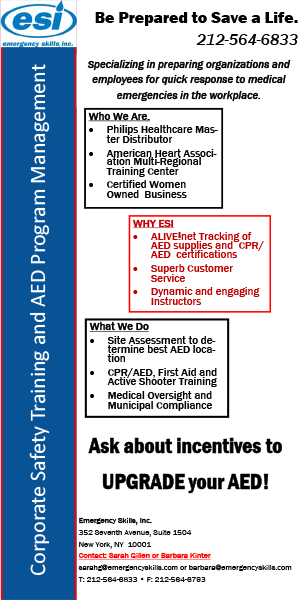Winter 2020
President’s MessageChapter Business Updates
Mind
Body
Soul
BP Spotlight
National Events and Info
Our Business Partners
Insights From Our Sponsors
Summer 2019
Message from Our 2019-2020 President, Rose A. JaworeckiChapter Business Updates
Mind
ALANYC Chapter – Member Spotlight
Body
Soul
National Events and Information
Welcome Our New Business Partners
Business Partner Listing
Insights From Our Sponsors
PRISM 2019
PRISM 2019Year End 2018/2019
Message from Our 2018-2019 PresidentMind
Body
Soul
Chapter Business
Business Partners
Welcome to Our New Board
Fall 2018
Welcome and President’s MessageALANYCis Networking!
ALANYCis Getting Fit!
ALANYCis Learning (A LOT!)
ALANYCis Succession Planning!
ALANYCis Planning!
ALANYCis Giving Back!
ALANYCis Partnering!
From Our Sponsors
PRISM 2018
2018 PRISMYear End 2017/2018
ALANYCisALANYCis Networking!
ALANYCis Learning!
Article: A New Member Perspective!
Article: This October’s ALA Symposium Was Simply Fabulous
Article: Employment & Labor Law Update 2018
ALANYCis Planning!
ALANYCis Giving Back!
ALANYCis Partnering!
Business Partner Listing
Mid-Chapter Year 2017
ALANYCisMessage from ALANYC President Tanya Duprey
ALANYCis Networking!
ALANYCis Learning!
Education Calendar in Review
ALANYCis Planning!
ALANYCis Partnering!
BP Spotlight
ALANYCis Giving Back!
Business Partner Listing
How did you like the new ALANYCis?
Winter 2017
Message from ALA NYC President Nellie LefteratosALANYC Welcomes 2017-2018 Board of Directors
Board of Directors
ALA Winter Party
Scavenger Hunt Winners
Animals at Work
The Value of an ALANYC Business Partner
Director Profile: Mark Shore
Director Profile: Peter Manzi
Educational Session
Scholarship Winners
ALANYC Annual Attorney Luncheon
Business Partners Listing
November 2016
Message from ALA NYC President Nellie LefteratosALA 2016 Education Symposium
LA Conference
IDEA Awards Program reminder
Planning for Success in 2017
LDI Event
ALANYC visits the Lower East Side Tenement Museum
November Luncheon
Director Profile
Salary Survey
Business Partners Listing
September/October 2016: Fall Into Central Park
Message from ALA NYC President Nellie LefteratosALA HOLLYWOOD NIGHT!
ALA Benefits Program
NYC Urban Debate League
Out of the Line of Fire, Preparing Your Defense Against an Active Shooter
ALANYC D&I Field Trip to the LES Tenement Museum November 3rd
ALA NYC Education Symposium
Business Development – 5 Ways to Impress Clients
New Members and New Changes: Welcome!
Prism Summer 2016
IntroductionAugust 2016: Summer in the City
Message from ALA NYC President Nellie LefteratosALA Summer Party
Foot in the Door
ALA Hollywood Night
Retirement
Sensory Marketing in Business Development – 3 Ways to Incorporate
Business Partners Listing
New Members and New Changes: Welcome!
June 2016: The Spirit of Freedom
Message from ALA NYC President Nellie LefteratosALA Charity Lunch
Career Resources by Robert Half Legal
ALA Annual Conference
Antitrust Guidelines
Business Partners Listing
New Members and New Changes: Welcome!
Prism 2015
PRISM Summer 2015Out of the Line of Fire, Preparing Your Defense Against an Active Shooter
 Sarah V. Gillen, President, Emergency Skills, Inc.
Sarah V. Gillen, President, Emergency Skills, Inc.
The world is extremely unpredictable. Recently, police officers started shooting at a meat cleaver wielding man who had injured 3 officers during rush hour in the neighborhood of Herald Square in Manhattan. A few days later there was an explosion on 23rd Street and 7th Avenue also in Manhattan. Each day, our peaceful world is called into question. Regularly, there are reports of active shooter situations that occur in the workplace. For this reason, Emergency Skills, Inc. presented an educational session “Out of the Line of Fire, Preparing Your Defense Against an Active Shooter”. This timely topic is of concern to the whole population but especially to those responsible for creating a workplace that is both productive and safe.
 Each of the news reports make us more frightened that severe violence in the workplace is inevitable. While the volume of the media focus on this topic perpetuates this idea, we need to keep these situations in perspective as well as do what we can to prepare for them.
Each of the news reports make us more frightened that severe violence in the workplace is inevitable. While the volume of the media focus on this topic perpetuates this idea, we need to keep these situations in perspective as well as do what we can to prepare for them.
There are ways that we can keep our employees safe ideally by preventing the situation from occurring in the first place as well as preparing your employees to react in the moment that it may occur.
The Federal Bureau of Investigation (FBI) published a study in which they collected data on active shooter events from 2000 to 2013. Gang related, terrorist and non-gun violence were excluded from this study. During the 13-year period, there were 160 active shooter incidents and 45.6% of the events occurred in commercial environments. Less than 15% of those occurred in offices closed to pedestrian traffic – typical office space. Overall during the 13-year period there were 1,043 casualties and 486 of those people were killed. While the realty of an active shooter is frightening, statistically you have a much greater chance of experiencing a cardiac related emergency or car accident.
Despite the statistics, it is prudent to take measures for prevention and preparation. The FBI study found that of the 23 assailants in the workplace, 22 of them were current or former employees of the company they attacked. This gives companies an advantage. First, through background checks, a company can avoid hiring individuals who may be prone to violence. Second, if the policies at your firm are fair and equitable, employee frustration levels should not rise to the workplace violence level. Finally, if a situation is escalating, there are often warning signs that should be acted upon by the company.
When performing background checks, look for history of violent crime, drug or alcohol abuse or past conflicts with co-workers. In addition to having policies where problems are documented and addressed uniformly, it is important to create a climate of trust. This climate creates a safer, more productive workplace, as well as an environment where an employee will alert management if they hear of any violence in the planning stages. According to the study, “The Role of Warning Behaviors” (Melroy et al, Behavioral Sciences and the Law, 29: 2011), in 81% of the cases at least one person knew that the shooter was thinking about or planning the incident and in 93% of the cases, attackers engaged in some pre-offence disturbing behavior. As an administrator, it is critical that pre-planning with the building management and security team along with local law enforcement has occurred, so that you have resources, if you fear the worst may occur.
Then one day you are in your office, completing some forms for your benefits plan and you hear: POP, POP, POP. The moment of truth has occurred. There are three steps to remember: RUN, HIDE and FIGHT.
 Run: Leave your belongings and get out. Take people with you but do not stop. Plan in advance your escape routes. Make sure you have alternate means and run away from the shots. Once you are safe, call 911.
Run: Leave your belongings and get out. Take people with you but do not stop. Plan in advance your escape routes. Make sure you have alternate means and run away from the shots. Once you are safe, call 911.
Hide: If your escape route is blocked, hide. If possible, lock yourself in a room or office. Once inside, barricade the door with furniture. Typically, active shooters are taking the path of least resistance, they do not waste time on locked doors. If a separate room is not feasible, hide behind furniture and/or surround yourself with chairs, desks, anything that can block you from vision. In both cases, silence your cell phone or turn it off. Even a vibration can give your position away. Keep everyone hiding with you quiet. Managers and supervisors, your lead will be followed. Stay as calm as possible, it will be over soon.
Fight: If your hiding place is compromised, be prepared to fight. Think about makeshift weapons now. For example, staplers, letter openers, or fire extinguishers could disable the perpetrator. According to the FBI study, 13% of these emergencies ended after unarmed citizens restrained the shooter.
Active shooter emergencies end quickly and often prior to law enforcement arrival. It is important to call 911 but do not put yourself at greater risk by delaying your evacuation to do so. Call 911 once you are safely removed from the environment.
Once law enforcement arrives, understand that everyone is a suspect. Some important rules to follow:
- Raise your arms and spread fingers.
- Put down any items.
- Avoid pointing and yelling.
- Avoid quick movements.
- Do not interfere with officer’s progress.
Law enforcement will need the following information:
- Location of shooter
- Number of shooters
- Physical descriptions
- Number and type of weapons
- Number of potential victims
It is important to remember that law enforcement must secure the area before emergency medical services will be permitted into the area. Bleeding control is an important first aid concept for your employees to learn, so they may aid their co-workers, if needed. Bleeding control includes:
- Applying pressure: Ideally using gauze, apply pressure to the affected body part. Continue to add more gauze if it becomes soaked with blood.
- Elevate: Elevate the injured body part above the heart.
- Tourniquet: As a last resort, you may apply a tourniquet. Note the time of day you apply the tourniquet.
Active Shooter emergencies are frightening and potentially devastating. Office administrators should develop relationships with resources such as local law enforcement, social workers, and building management in advance. Creating and implementing disciplinary policies that are fair and consistently practiced will improve the climate of your workplace. Training in emergency procedures such as CPR, first aid and evacuations will prepare your employees to respond calmly and correctly during an actual emergency.

